Believe it or not, when you start to get involved with firearms training on a serious level, you quickly find out there are two big camps of people in the firearms world.
1.) Tactical shooters (That mostly take tactical shooting classes and self-practice)
2.) Competition shooters (such as those that shoot gun sports like IDPA, USPSA, 3-Gun, etc)
(Often referred to as “Tactical Timmies” and “Gun Gamers” by whomever is doing the name calling and wants to make fun of the other)
And while some people cross over these two “sides”, most of them don’t.
What’s The Big Deal?
I started doing firearms training seriously because I wanted to improve my gun skills to be able to protect myself and my family.
So what’s the argument here?
There are many people from the tactical side that say competition shooting will get you killed in a real life situation because you’ll develop bad “competition habits” or because the competition shooting is not realistic enough to what you’ll find “on the streets”.
The truth is that this argument is an old and tired one that I had heard before, for years, before I ever started to do more firearms training.
You see, I’m a martial artist and the “competition” vs “real life” debate has been going on in the unarmed combat world for a number (hundreds?) of years.
Here’s my take on it …
What’s WRONG with Competition Shooting?
First, what is competition shooting? Wikipedia explains:
“Practical shooting, also known as dynamic shooting or action shooting, is a set of shooting sports where the competitors are trying to unite the three principles of precision, power and speed, by using a firearm of a certain minimum power (caliber) to score as many points as possible during the shortest amount of time (or sometimes within a set maximum time).
“While scoring systems vary between organizations, each measures the time of which the course is completed, with penalties for inaccurate shooting. The courses are called “stages”, and are shot individually by the shooters. Usually the shooter must move and shoot from several positions, fire under or over obstacles and in other unfamiliar positions. There are no standard exercises or set arrangement of the targets, and the courses are often designed so that the shooter must be inventive, and therefore the solutions of exercises sometimes varies between shooters.”
So while the details vary, most practical shooting competitions are about people shooting as fast and accurate as possible on a given stage and comparing those times and accuracy.
The argument from the tactical side is that competing in practical shooting competitions will create bad “game only” habits that will get you killed in a real altercation.
What are they talking about?
Things like …
** Not actually using cover and/or concealment or pie-ing corners correctly …
** Running and generally moving fast through stages (running and gunning)
** Not having to seek out targets (because you usually know how the course of fire is designed before hand).
** Using “competition only” gear to include no concealment garments, race guns, race holsters/mag pouches, etc
** Using gamer only techniques such as index shooting, slide lock reloads, etc
So the main arguments are that the gear and guns used in most practical shooting sports are not anywhere close to what you would use in “real life” in your home, or concealed carrying, or even if you’re a military or police officer.
For instance, most people don’t walk around looking like this picture of the amazing competitive shooting family, The Miculeks:

It’s clear they’re wearing gear that allows them to play their game of practical shooting more competitively. The dropset, minimalist, outside-the-waistband holsters attached to outside the belt loop, giant gun belts, sponsor-laden sweat wicking polos, speed load shotgun shell carriers, race guns, etc etc.
By the way, it’s funny how (a lot of) the same people that claim competition shooting is not practical because you have “gamer gear” are the same guys that take tactical classes wearing a plate carrier, multicam BDU’s, an AR-15 slung over their shoulder and a chest rig … yet they’re generally civilians who work in an office at a computer desk. You could say that their “tactical” guns and gear are not anywhere close to what they actually wear on a daily basis either.
In short, there are some “modifications” that people do to make winning competitions easier both in gear, guns, and technique/tactics which may be great for shooting at paper targets in the fastest, most accurate manner possible … but … not so great for training to survive a real life defensive gun use situation.
What’s RIGHT with Competition Shooting?
Simpy put, nobody shoots as fast AND accurately as competition practical shooting champions. Period.
Because all the practical shooting sports are based on a combination of speed and accuracy, champions in these sports are extremely fast and accurate. Heck, forget champions, even the average “not so great” competitor is highly skilled.
What’s more: because of this competitive nature, very quickly “what works” to shoot more fast and accurate is figured out.
For example, sometime in the early 1980s, Rob Leatham and Brian Enos pretty much took the competition shooting world by storm when they transitioned from the Weaver stance that was “gospel” at the time, and adopted the Isosceles stance.
Nowadays, the modern isosceles is fundamentally the “go to” stance of all serious pistol shooters because it’s been proven time and time again to be more shooter friendly, more natural, more effective, and just plain faster and more accurate.
So while nothing you may see in a 3-Gun, IDPA or USPSA match may look like a “real gunfight” — if you want to learn how to shoot faster and more accurately, you could do a lot worse.
Plus, there’s a lot to be said for the nature of any type of competitive activity. Which brings me to …
Combat Sports vs “Reality Based Self Defense” & Traditional Martial Arts
I said before that this debate, to me, is an old one because I’ve encountered it before in my martial arts training.
The basic argument is such “Sport martial arts/Combat Sports will either A) get you killed in a real self defense situation or B) are not as effective as more “deadly” reality-based self defense or traditional martial arts”
What are combat sports? Again Wiki gives a good definition “A combat sport, or fighting sport, is a competitive contact sport with one-on-one combat. Determining the winner depends on the particular contest’s rules. In many fighting sports, a contestant wins by scoring more points than the opponent or by disabling the opponent. Boxing, Kickboxing, amateur wrestling, Judo, Brazilian Jujitsu, mixed martial arts, and Muay Thai are examples of combat sports.”
In a nutshell, combat sports arose because people training in martial arts systems wanted to “test” their techniques and personal skill against a live, resisting opponent of equal skill and relatively equal physical attributes (size/weight/age).
What’s more: combat sports have “rules” and “protective gear” that allow these martial artists to essentially practice fighting to the death without actually killing/crippling/seriously maiming each other.
It used to be traditional martial artists who claimed that their techniques were too deadly for full contact fighting. That notion was basically proven false. For example, most karate punches do not end in the fabled “one strike kill” because Mas Oyama invented full contact karate tournaments in the 1960’s and hundreds of black belts punched the crap out of each other and nobody died.
Nowadays, “reality based martial arts” claim that their techniques are too deadly for full contact fighting and or that the rules won’t allow their more deadly techniques. To an extent, they’re correct, because you can’t go around gouging out people’s eyeballs and expect anyone to ever compete in more than one competitive sporting event.
Instead, what we have with combat sports are a format–using rules and regulations–for martial arts (arts designed for combat) so that people can test their martial arts skills against live, resisting opponents.
Benefits of Sparring And “Pressure Testing”…
Without going into it too much … There are many, many benefits to sparring and the “pressure testing” that combat sports bring to training unarmed martial arts for self defense.
Since the explosion of the Mixed Martial Arts (MMA) scene mainly driven by the Ultimate Fighting Championship (UFC), it’s now clear to everyone what techniques and tactics generally prevail in unarmed combat.
Much like the weaver shooting technique being replaced by the modern isosceles shooting technique because of the superiority of the latter being proven through competition, a clear set of martial arts skills have generally proven to be superior in the format of mixed martial arts competition.
Yes, there are still rules like weight classes, gloves, and no techniques that seriously injure your opponent (eye gouges, biting, etc) but in general it’s done a lot for showing what the realities of most unarmed fights look like between two determined and trained individuals.
And more importantly, there are ENORMOUS benefits to a person on the individual level who competes in combat sports.
For one, it’s not a normal thing in our modern society to be in a physical altercation. Most people have never punched someone or been punched. Or had to wrestle someone for dominance. If they have it’s been a long, long time (grade school?)
There are enormous mental benefits to having the experience of being in lots of “fights” (even if they’re just sport fights) that can be beneficial in a real self-defense situation.
This is why there are numerous “caught on tape” street fights on youtube where you see MMA guys, or boxers, or martial artists beating up a gang of street toughs because they’ve had the experience of being hit, hitting other people, and generally dealing with the weird emotional/chemical/mental/stress cocktail mix that is interpersonal violence and responding appropriately.
Circling Back To Gun Training…
The same benefits can be seen with competition shooting and translating that to shooting for self defense.
Two of the major benefits to competition I see are:
Testing and stress inoculation.
For example, let’s talk about testing. There are a lot of military or law enforcement people that think they are “good shooters” because they can pass a pistol qualification course. That is until they attend even a local practical shooting competition and see that they’re barely fast and accurate enough to be at the bottom of the match results.
That’s not to pick on anyone. I had the same experience myself. I got my butt handed to me the first time I shot a local IDPA match. And that’s the way it will be for you too, if you ever step outside your comfort zone.
Just like the first time you step on the mat to spar using your new “martial arts skills” you will quickly find out you’re not quite as good as you thought you were and that it’s all a lot harder than it looks. And that maybe that technique, punch, or kick you thought was totally going to work … actually doesn’t work so well in real life. You see where I’m going with this?
So that’s the first benefit, testing your skills.
Second is the stress inoculation. While I imagine getting in a gunfight is pretty stressful, competition shooting may be the most stressful shooting you can readily expose yourself to.
For one, most people HATE to perform in front of their peers (public speaking is consistently ranked as a top 5 fear of people). Overcoming this fear and performing under this pressure is immensely valuable training.
Then there is simply thinking on your feet and coming up with solutions while actually shooting and moving.
It’s a fact that when someone starts shooting at you, you usually start moving your feet to get away from those bullets. It’s also a fact that there are not many places where you can actually move, shoot and practice using cover because they’re usually banned from most indoor/outdoor shooting ranges.
You can do all those things at almost any practical shooting competition. Which means that practical shooting competitions are one of the only places that a person interested in defensive gun use training can actually practice life-saving skills like shooting and moving.
The Origins of Practical Shooting Competition…
It’s important to remember that, like martial arts sporting competitions, practical shooting competitions were developed to test and hone real self-defense skills.
From Wiki again …
“IPSC was formed in 1976 at a meeting in Columbia, Missouri, led by the late Jeff Cooper. It was here that the sport of Practical Shooting was formally established after years of independent efforts around the country to build upon the handgun skills and training for self-defense …
“… Practical Shooting challenged the then accepted standards of technique, training practices and equipment. Its early pioneers developed scenario-based competitions to accurately measure the effectiveness of their own shooting techniques and equipment …
“The International Defensive Pistol Association (IDPA), founded in 1996, is … a shooting sport based on defensive pistol techniques, using equipment including full-charge service ammunition to solve simulated “real world” self-defense scenarios. Shooters competing in defensive pistol events are required to use practical handguns and holsters that are deemed suitable for self-defense use.
“… It was decided by the founders of IDPA (Bill Wilson, John Sayle, Ken Hackathorn, Dick Thomas, Walt Rauch and Larry Vickers), that USPSA competitions had become too far removed from the reality of defensive shooting situations, using extensively modified guns, handmade ammunition, and speed-draw holsters that were impractical for self-defense.”
Jeff Cooper, Ken Hackathorn, Larry Vickers — these are all well known and respected defensive gun instructors — not typically thought of as competition shooters.
The point being that competition shooting, like competition martial arts, was (primarily) developed to give people an avenue to practice realistic self-defense techniques in a safe manner. Period.
In Conclusion …
In my mind, both in “unarmed martial arts” and “gun martial arts”, competition has aton of benefits.
There is no reason why you can’t use competition to become a faster, more accurate shooter. You’ll also get plenty of practice doing things you normally are not allowed to do at an indoor/outdoor shooting range such as shooting while moving, reloads, drawing from concealement holsters, and using cover.
And yes, there can be downsides — but they’re so outshined by the upsides — you just have to be aware of what they are and keep it in mind.
Just like a boxer should be aware that he’s not wearing 16 oz padded gloves in a street fight, and adjust accordingly, you should be able to use your brain and make the same decisions and acknowledgements in your own compeitive shooting and defensive gun use training.
On the other hand, you might just get bitten by the “competition bug” and decide to really throw yourself into the gun game sports. If so, what’s the harm in that?
If you develop the high level skills that are needed to excel at shooting sports … let’s just say that I highly doubt that if Robert Vogel or Jerry Miculek are ever in a gun fight … they won’t lose because they are lacking defensive gun skills.
For the record, Chris Kyle was certainly not lacking in tactical training or practice at shooting real people in real combat. Yet, he got murdered by surprise by a mentally unstable person on a gun range. Life and unexpected events happen sometimes and no amount of competition OR tactical training can prepare you for every possibility.
What about you? Have you ever done any competition shooting? Do you know anyone who has?
Do you think it has helped better prepare you for defending yourself or your family? I’m interested to hear your thoughts either way …







![Are Compensators Worth It? [Video]](https://preparedgunowners.com/wp-content/uploads/2025/07/Depositphotos_815431992_S-218x150.jpg)
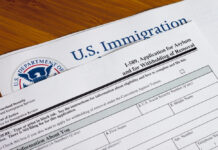

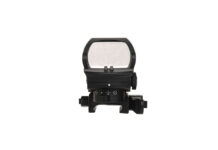


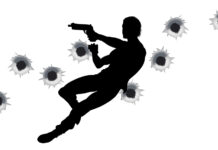

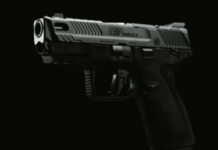
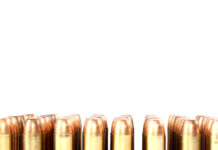
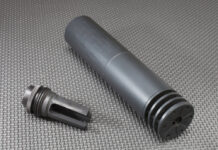
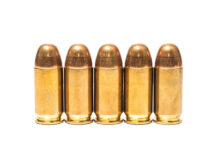
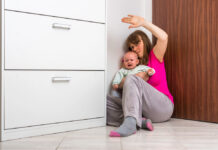










![Optic Ready vs Milled slides? [Video]](https://preparedgunowners.com/wp-content/uploads/2024/02/image-3-100x70.png)
![[Checklist] What Gear You Need To Take Pistol, Rifle & Shotgun Training Courses [Video]](https://preparedgunowners.com/wp-content/uploads/2023/07/Depositphotos_275087632_L-100x70.jpg)
![What is in Carter’s 2023 EDC? [Video]](https://preparedgunowners.com/wp-content/uploads/2023/07/Depositphotos_146856137_L-100x70.jpg)



people are stupid even faceing certain death most of them simply stand there and get shot training or not makes no differance they had their survival instinct complletely destroyed by milliniums of religious brain washing as well as civilation with its unconstutitional communist party law they simply do not have what it takes to actually survive this is why criminals get away with murder and the innocent have to pay for everything
Interesting outlook there Alfred. Not sure how you found my site then …
You’re nuts, Alfred. You also need to use punctuation.
I have walked both paths of shooting, and during my military days I also trained in the martial arts. After I retried from the military, I became a deputy sheriff, and I retried from that, and now I am a night security guard at a museum. I feel that both areas have benefitted me, and helped me in their own ways in real life situations throughout my life. I just don’t care for the politics in the actual gaming style of shooting. Thankyou I enjoy your articles very much. Wyatt
I hear you about the politics.
Thanks for the comment!
Bottom line is, are the courses you are shooting set up to resemble real world situations with real world equipment? RACEGUNS are nice, but they and their related equipment seem to me to be overly complicated and sometimes bulky for a Handgun.
Best training I have received in 30 years as an LEO and Firearms Instructor were Live Fire/SWAT Houses, New Generation FATS machines, Simunition/Paint Ball in Tactical Shootl Houses. Your juices get flowing, you are under pressure, AND you can learn from your mistakes RIGHT NOW. Builds very usable muscle memory, shows you to “keep your Butt Down!”
Thanks for the comments!
Yeah, I have yet to take some force-on-force classes but can’t wait to do that. It’s like sparring … with guns 🙂
I’ve done a couple of the IDPA shoots and have found them to be fun. My choice at home has been a model 29 S&W 44mag, but have been shooting a Springfield loaded model 45 1911. I’m finding that using a standard semi auto would benefit me more as it would be the one I would probably be carrying. I used to race motocross and would train 4 days a week, then you had practice the day before….so, I had in fact 5 days on my bike going at what I felt was a race pace. Well, 15 years on a bike, 7 as a professional with all that practice….race day is different. With 30+ riders at the gate your adrenaline takes you to a different place, as does when they say shooter ready and you have 8-10 guys watching you shoot by yourself. What happens when you have 1 or more people shooting at you? I’m just hoping that what I’ve gone through before with my racing and practicing with the IDPA shoots, that I can control that adrenaline rush and use it to my advantage. I don’t go to these shoots to be the top dog with all the high priced race gear. I go with what I would be carrying (with the exception of the higher capacity mags) to better my chances when or if the day comes I need those skills.
Great stuff Kriss. And you’re right all that stressful training helps.
Hello Caleb, nothing like a little competition to liven up ones skills. I have been a hunter/recreational shooter for 40 years now. I thought I was a competent and safe shooter…untill I got yelled at a couple times while competing. I never have been DQed (disqualified) but it happens almost every match. It is so easy to have a little (or big) safety lapse while shooting. Not only have my shooting skills improved immensely, but ALL competitors become safer. Two very good things!
If competition shooting will get you killed in a real self defense situation I have not been able to find any incidents where it occurred. Not one.
I have looked. I have asked.
http://firearmusernetwork.com/2015/10/22/training-and-competition-the-dark-side/
Nothing yet.
Great post John, thanks for commenting!
Agree, great post. Competition is fun, tests skills, and isn’t that expensive if you use gear you already have. How many armed citizens have EVER practiced moving to cover? Ever IDPA shooter has. And like commenter John, I’ve never heard of an incident where competition “bad habits” got them in trouble or hurt. It’s an internet boogeyman.
John, that’s a purposely naive statement you just made. It’s obvious your a butthurt 3 gun fan that can’t face the fact that 3 gun is a sport and has little tactical use. Infantryman have been shooting from cover hundreds of years before 3 gun was thought of. And this low is idea you have that there has to be proof 3 gun skills got someone hurt in a real life situation is just crazy. Grow up dude, 3 gun is a sport
Hey Randy, You should give 3 gun a try bud. Im a former military CQB instructor with more than a few deployments and fire fights under my belt and have recently been lucky enough to spend time with IPSC / IDPA and 3 Gun competitors and Ive been very impressed with the speed, confidence and accuracy of all of them.
To be fair I was a little skeptical at first but I definitely agree with the article and how the more we can pressure test ourselves the more we can perform in a real life situation. Googling for evidence aside – lol
A few of the IPSC shooters however, who are truly gifted marksmen seem to be very wary of bringing tactics up at all as they feel its not for them to mention it – this is a problem to me as they are the ones who need to feel comfortable when they conceal carry every day – What they are forgetting is that they have spent far far more time honing their skills than all the other shooters and so if they just spent a few weeks applying that to a few tactical training sessions they would be very high speed at it. I say this becuase I have seen how they react to dynamic shooting scenarios and they performed very well – they can do this because their core strength (shooting) is so damn good.
Anyway thats my 2 cents – I think the way forward for me is to incorporate the lessons of speed and accuracy im taking from from IPSC with the more tactical shoots of IDPA and hammer these hard for a few months and then take that back to tactical training – I have a strong feeling I will be the better man for it.
Anyway dude im not hating – give it a go but more importantly stay safe brother
Thanks D, I agree
This is a very interesting article. I have sort of run the gambit of firearms related training, starting with military, followed up by a short career in LE, finally getting into USPSA (IDPA has too many rules). As far as becoming a better marksman mechanically (tactics, judgement, aggression notwithstanding), the best way to do so is to shoot A LOT, with people who know what they are doing. Shooting regular matches seems to be the best way to get this much quality trigger time.
[…] https://preparedgunowners.com/2015/09/22/will-competition-shooting-get-you-killed-in-a-real-self-defe… […]
LE think that their yearly qualification test where they stand still and shoot at a target that doesn’t move is the only “real” training. WRONG!
IDPA folks think they are really training for combat. WRONG!
However being a combat Marine vet and an IPSIC shooter. Any trigger time is a good thing. IDPA shooters, if you want to learn tactics, take mutiple classes. A week with Massad Ayoob would be a great place to start.
LE, go shoot a USPSA or a steel match and see how badly you shoot. I don’t care who you are. We all need more trigger time, especially those who count on their weapon to make it home in time for dinner.
Caleb, I just read your bio. If I would have known that you were strictly and academic my comments earlier would have been a little different. I would rely more on a deer hunter standing by my side than strictly an academic.
Think about it. Who do you want teaching you conceal carry, someone that’s been in a live firefight are someone who has simply studied it? Who do you want teaching you how to shoot, the guy with the beautiful Les Baer 1911 or the guy with scratch marks all over his clock from pulling it out of the holster multiple times?
No disrespect intended. I bet you have a bunch of knowledge in that brain pan of yours. But experience weighs more than simple knowledge.
Hey James,
I see you’re a veteran – no combat experience here (I’m strictly a civilian) but over 120 hrs of open enrollment classes with everyone from Academi (formerly blackwater), Tom Givens, Langdon, etc – that’s way more training with a gun than any standard LEO gets…
I’ve shot multiple IDPA matches and you can see the post I did on this site of replacing parts in my personal G19 EDC after 9,000+ rounds fired in less than 2 yrs.
I’ve got more trigger time than most, much less than others, and agree that the guy with more trigger time is the guy you want by your side.
Speaking of which, did you have a point with your comment? My conclusion was that competition shooting is great and will better prepare you for anything, no downsides.
Ok, I’m the least qualified person here as I new to gun ownership, my ‘real’ experience was being on places were we were shoot at or covering from crossing fire. Thank you all military and police vets for your service.
In any case I ended up on this blog as I want to buy a gun, for shooting at the range and home defense. I’m considering buyin and sw.Shield 2 for home defense and getting and XDM competition to sharpen accurracy, and I wanted to verify if it is a good idea on my part.
I don’t understand the discussion going on here as I belive accurracy shooting (competiton) is important for real life defense, but I guess because of the investment most people choose one over the other.
Hey you are good to go by wanting to pursue both self-defense and competition.
My thoughts are the S&W Shield 2.0 is good for you for conceal carry/home defense. The XDM would not be my first choice (maybe try a full size M&P 2.0?) – but it is ok if that’s what you want for competition too.
Comments are closed.